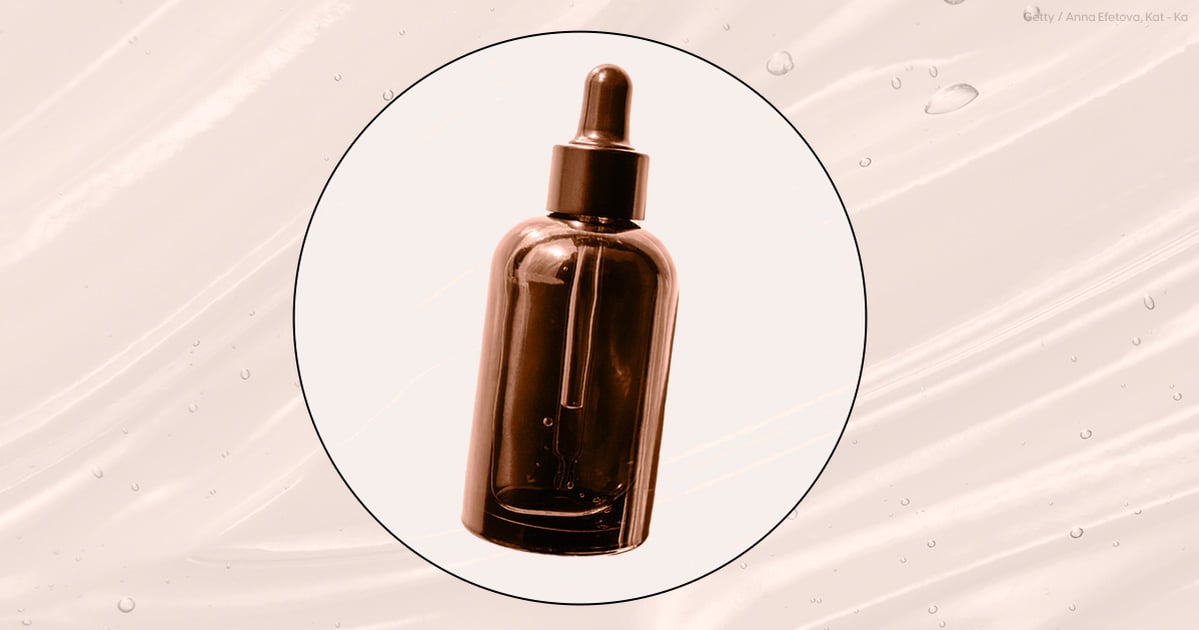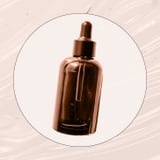TikTok is home to some pretty wild claims, and not all of them are worth paying any mind. A video on the app recently went viral where user @Samiasauce talks about her experience using volufiline to fill her hollow undereyes and laugh lines without the use of dermal fillers. For the unfamiliar, dermal fillers are injectable substances that are used to help diminish the appearance of fine lines and wrinkles by adding more fullness to the face. They’re often used in the lips, cheeks, and even the temples. They’re expensive and minimally invasive, which is why people are always on the hunt for alternatives. Some say volufiline, which is made from a plant extract, can help add fullness to the face sans any needles.
The idea that a topical product could garner the same results as filler is a little unbelievable. To get to the bottom of the claims, we tapped experts to answer all of our questions about volufiline, including what it is and whether or not it actually works. Keep scrolling to read more.
What Is Volufiline?
@samiasauce Replying to @tinoladypink before + after of how l filled my hollow undereyes and laugh lines without filler, and also how to use it and where to get it! Its only been a month since ive started using volufiline and l cant wait to finish the bottle! #volufiline #undereyefiller #filler
“[Volufiline] is a patented plant extract created by French company Sederma that builds volume in the skin,” Smita R. Ramanadham, MD, ASPS member surgeon, tells PS. “It is composed of sarsasapogenin, which is an extract from plant root. In theory, it increases lipid and fat storage, which increases the volume of fatty tissue, and subsequently, volume.”
According to Dendy Engelman, MD, FACMS, FAAD, board-certified dermatologic surgeon, although it claims to add volume and plumpness to the skin, she says the ingredient isn’t well-researched enough to know the full effects. “It’s intended to be used to reduce the rate of the natural aging process by plumping and smoothing the skin,” Dr. Engelman says. “It’s supposed to demonstrate an increase in facial volume over the course of one to two months. However, more clinical data and research is needed to analyze these results.”
Volufiline isn’t widely used yet, but it is available over the counter at retailers like Amazon. However, experts warn against purchasing the product from sellers on the platform. “[It] can be dangerous as many sellers have a raw form of the ingredient available for purchase that is not intended to be in direct contact with the skin,” Dr. Engelman says. The ingredient is meant to be mixed with other creams and serums, which may not be clear when purchasing and could potentially lead to negative side effects.
Volufiline Side Effects
Typically, volufiline is considered safe for topical use in skin care and cosmetic products. However, there are some potential side effects if the products aren’t used properly. “Skin irritation, redness, itching, or irritation at the site of application, especially in individuals with sensitive skin [can occur],” Azza Halim, MD, says. She suggests doing a patch test with any new sin-care product containing volufiline before applying it to larger areas of the skin, especially if you have sensitive skin.
Can Volufiline Replace Filler?
In short, the answer is no. “Topical products can help supplement facial filler but cannot directly replace the effect,” Dr. Engelman says. “With hyaluronic acid-based fillers, we are able to instantly target and fill in wrinkles and more shallow areas of the face. With topicals, it is difficult to replicate the same smoothing and plumping effects.”
If you’re looking for proven treatments that can increase fullness and volume in the face, there are more traditional routes you can take. “For skin plumping effects, hyaluronic acid serums and overall hydration and moisturizers can improve this,” Dr. Ramanadham says. Additionally, actual dermal fillers work as well. “Volumizers such as hyaluronic acid-based fillers and biostimulators are injectables that have data to boost the skin’s collagen,” board-certified dermatologist Kunal Malik, MD, says. “Other treatment modalities that are known to boost collagen but not necessarily fill or volumize are microneedling and microneedling with radio frequency. Fat grafting, which is the placement of one’s own fat cells in targeted areas such as the face, is also a treatment consideration and boasts natural results.”
However, prior to starting any new regimen, it’s important to consult with your doctor or a licensed medical professional.
Renee Rodriguez is a staff writer and social producer for POPSUGAR. She writes across all verticals, but her main areas of expertise focus on fashion and beauty content with an emphasis on reviews and editor experiments. She also produces social content for POPSUGAR’s TikTok and Instagram accounts.



